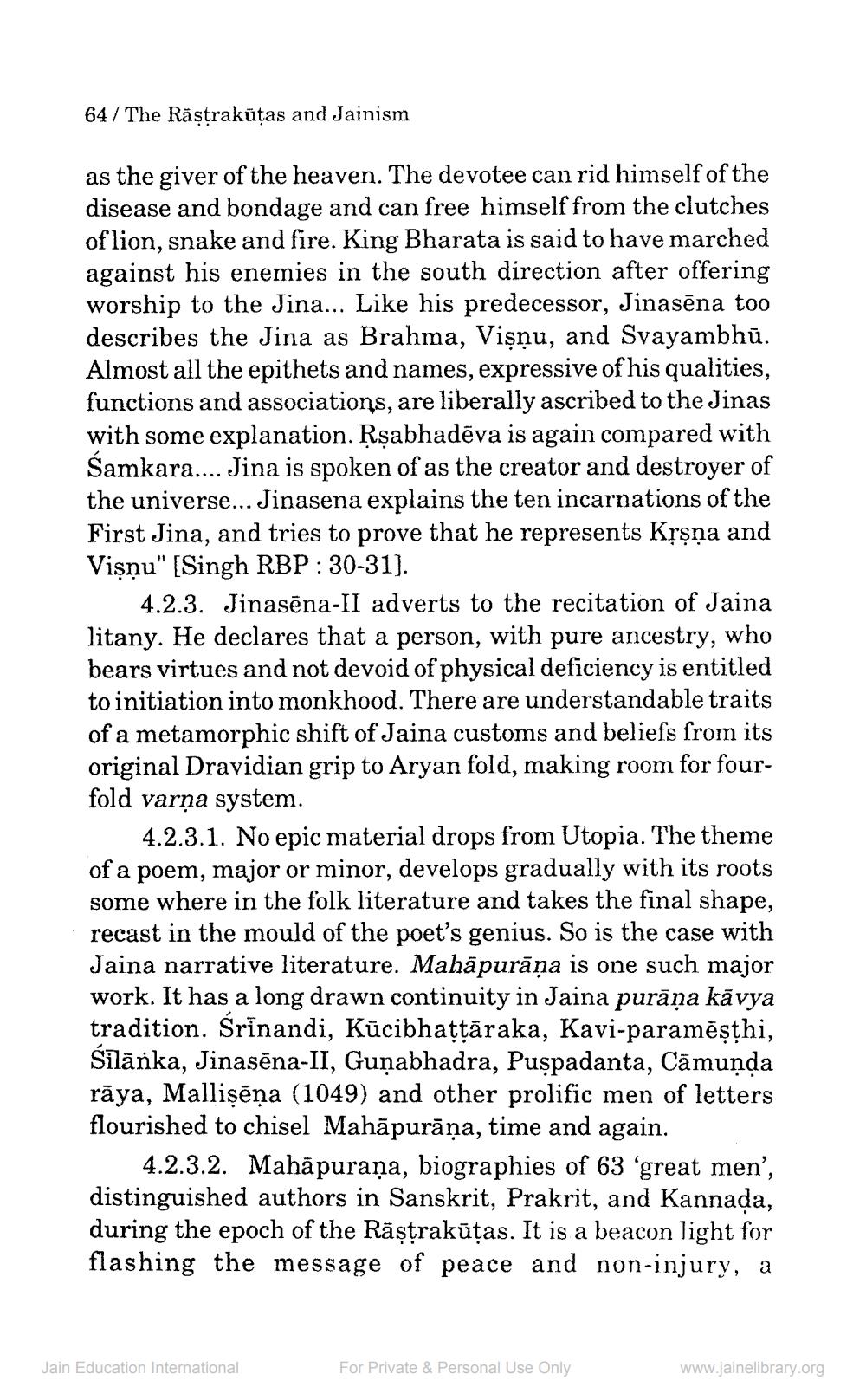________________
64 / The Răstrakūtas and Jainism
as the giver of the heaven. The devotee can rid himself of the disease and bondage and can free himself from the clutches of lion, snake and fire. King Bharata is said to have marched against his enemies in the south direction after offering worship to the Jina... Like his predecessor, Jinasēna too describes the Jina as Brahma, Vişnu, and Svayambhū. Almost all the epithets and names, expressive of his qualities, functions and associations, are liberally ascribed to the Jinas with some explanation. Rşabhadēva is again compared with Samkara.... Jina is spoken of as the creator and destroyer of the universe... Jinasena explains the ten incarnations of the First Jina, and tries to prove that he represents Krsna and Vişnu" [Singh RBP: 30-31).
4.2.3. Jinasēna-II adverts to the recitation of Jaina litany. He declares that a person, with pure ancestry, who bears virtues and not devoid of physical deficiency is entitled to initiation into monkhood. There are understandable traits of a metamorphic shift of Jaina customs and beliefs from its original Dravidian grip to Aryan fold, making room for fourfold varņa system.
4.2.3.1. No epic material drops from Utopia. The theme of a poem, major or minor, develops gradually with its roots some where in the folk literature and takes the final shape, recast in the mould of the poet's genius. So is the case with Jaina narrative literature. Mahāpurāņa is one such major work. It has a long drawn continuity in Jaina purāņa kāvya tradition. Śrinandi, Kūcibhattāraka, Kavi-paramēșthi, Silānka, Jinasēna-II, Guņabhadra, Puspadanta, Cämunda rāya, Mallisēņa (1049) and other prolific men of letters flourished to chisel Mahāpurāņa, time and again.
4.2.3.2. Mahāpurana, biographies of 63 ‘great men', distinguished authors in Sanskrit, Prakrit, and Kannada, during the epoch of the Rāstrakūtas. It is a beacon light for flashing the message of peace and non-injury, a
Jain Education International
For Private & Personal Use Only
www.jainelibrary.org




